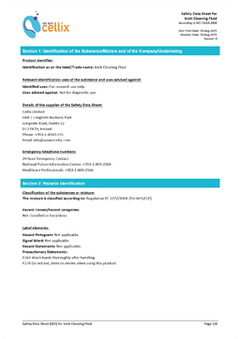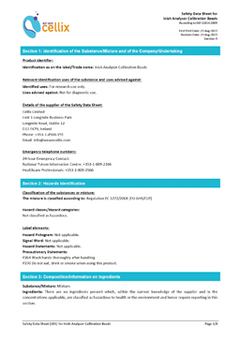CELL LINES
Cell counts and cell viabilities of cell lines are key metrics of every cell-based assay and analysis of these metrics are performed daily in thousands of labs around the world. Cell lines are particularly important for R&D applications including testing drug metabolism and cytotoxicity.
Transfection efficiencies of cells are particularly important in research applications and poor transfection efficiencies can prove to be very time-consuming. The Inish Analyser Transfection Efficiency Prediction (TEP) assay improves workflows ensuring you are plating the highest number of transfected cells.

WHAT DO I NEED TO GET STARTED?
Materials
The Inish Analyser does not require any expensive consumables such as slides or cartridges. Instead we use affordable standard tubes (500 µL), available from Cellix. Sample preparation is very simple - just using a pipette.
In general, you will need the following to execute Cell Counting & Viability and Transfection Efficiency assays:

Cell Sample Preparation (Cell Counting & Viability and Transfection Efficiency Assays)
In this example, we use Jurkat cells. Culture the Jurkat cells in the recommended medium RPMI 1640 (Gibco 31870) supplemented with L-glutamine (Sigma 59202C) and 10% Fetal Bovine Serum (Sigma F4135). Centrifuge the Jurkat cells at 50g for 8 minutes. After centrifugation, resuspend the cells in growth media to ensure the cells are in suspension. Recommended cell concentration is 50,000 - 2,000,000 cells/mL. Vortex cells or pipette cells up and down to ensure a homogenous solution.
Transfection Step - Electroporation (Transfection Efficiency Assay)
Add 2µg (4µL) of DNA (GFP vector) to each 100µL of sample and mix gently. Transfer cell/DNA suspension into certified cuvette and select the appropriate Nucleofector Programs for high viability (X-01) and high expression (X-05). Follow the steps below to execute the Transfection Efficiency Prediction (TEP) assay with the Inish Analyser. Should satisfactory TEP be detected, add 100µL pre-warmed antibiotic free media to each of the remaining transfected samples. Wait 10 minutes before plating.
Running an Assay with the Inish Analyser
The protocol for running an assay with the Inish Analyser is the same for both the Cell Counting & Viability assay and the Transfection Efficiency Prediction assay.

Results of Cell Counting & Viability and Transfection Efficiency Assays
























.jpg)
.jpg)

.jpg)
.jpg)